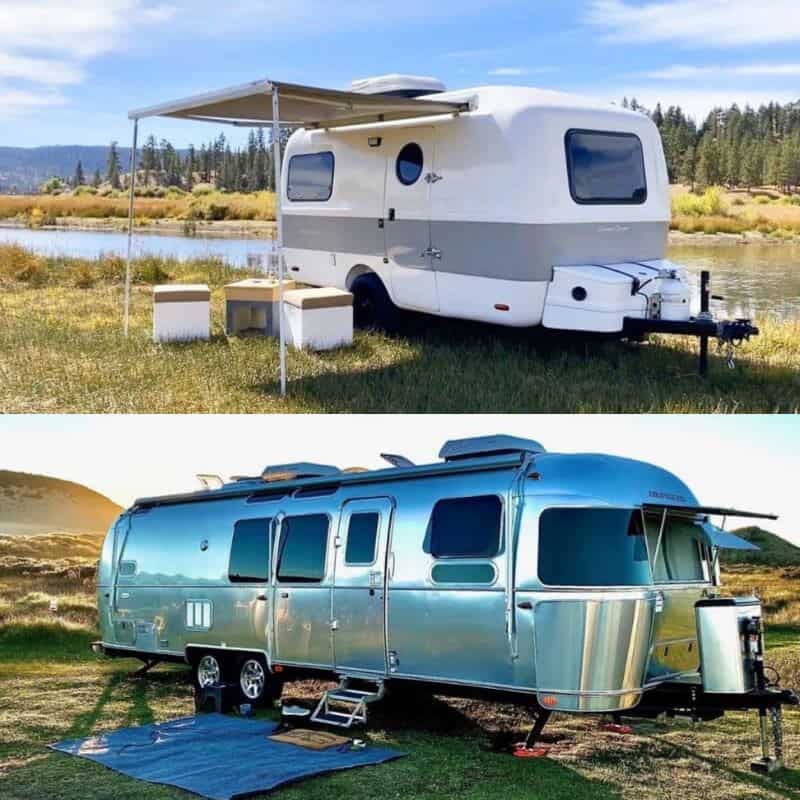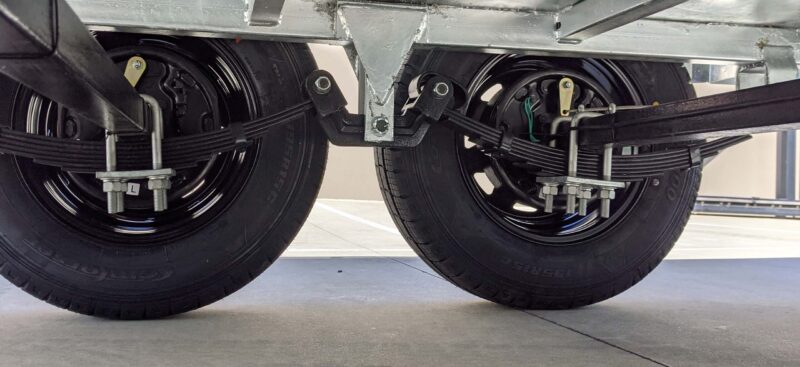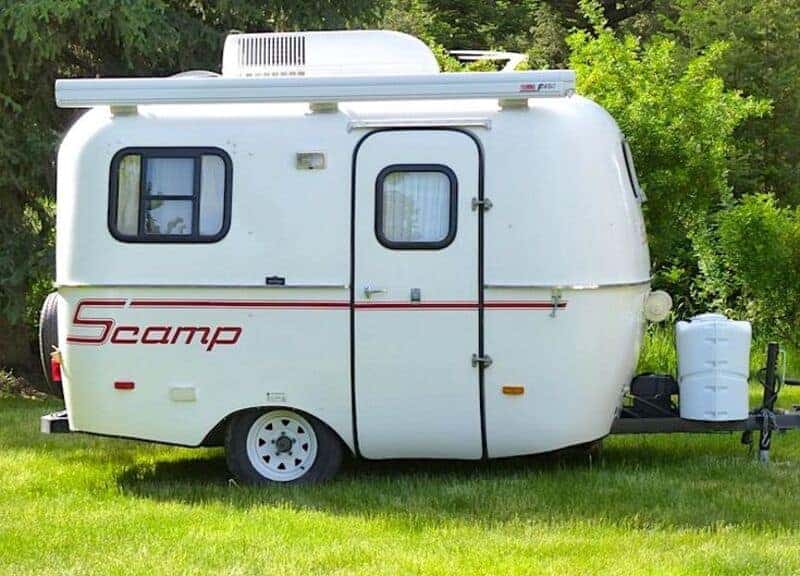Are fiberglass campers better than aluminum? For the most part, seasoned RVers will tell you that the choice between fiberglass campers and aluminum campers is entirely personal.
However, there’s always that small element of fierce debate between the two. Which one is the superior camper and does it really matter?
When it comes to aluminum campers, most people immediately conjure images of classic Airstreams. The same with fiberglass campers, except it’s Casita, Scamp, or Escape.
The truth is, fiberglass is the material behind many an RV, far more often than aluminum. There are several reasons for that, mostly cosmetic and repairability.
One thing is certain, manufacturers are clearly shifting to fiberglass and they’ve done so for a very long time now. Whether or not that makes fiberglass better is up to the buyer.
It’s always best to make an informed purchase, however, so we’ll dive into the controversy and separate the wheat from the chaff so you can decide which one is right for you.
How to Tell if You Have an Aluminum or Fiberglass Camper?
This is where those who are new to RV life get a little confused. Aluminum is often associated with the smooth appearance of an Airstream or something very similar. That’s not the case for all aluminum RVs—not even most.
Aluminum is typically manufactured with ridged siding, thanks to the process of pressing aluminum over the underlying framework. Airstreams are actually an exception to the rule.
The reason Airstream trailers are the exception is simply because of design demand. Airstream constructed something that became overwhelmingly popular decades ago and they’ve stuck to the design ever since.
Airstream takes thin, lightweight sheets of aluminum and layers it over a different framework shape than is common in today’s RVs. It doesn’t make it better than fiberglass, only different in terms of old-school popularity.
Fiberglass RVs are the exact opposite. They feature smooth exteriors that are often molded prior to installation. Whether they are molded as an entire shell (Scamp trailers are manufactured this way) or in many separate components, the result is always a smooth surface.
What Types of RVs Have Fiberglass Siding?
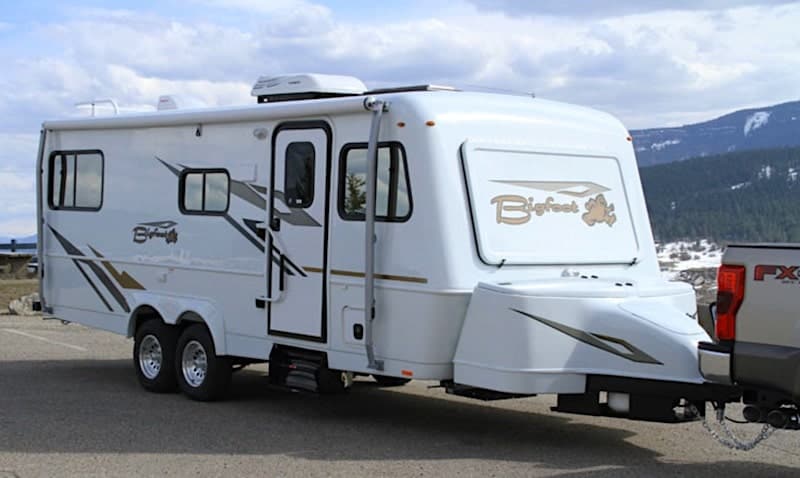
Fiberglass campers dominate the modern RV manufacturing process. It’s a little more expensive to produce but more and more RVs are arriving off the assembly room floor with fiberglass construction.
While fiberglass is often associated with Scamp, Escape, Oliver, and Boler, not all fiberglass RVs feature those smooth, rounded corners.
For instance, the travel trailer in the above picture is far from the Escape and Scamp aesthetic, but it features a fiberglass construction. Others such as Starcraft’s Super Lite feature a laminated construction that’s vacuum-bonded featuring both fiberglass and aluminum framework.
Many modern RVs feature fiberglass exteriors but you’ll also see a wild mix of terminology when looking through them. Terms like TuffShell, vacuum-bonded, and laminated are thrown around quite a bit.
All three of those terms refer to surface technologies, describing exterior protectants that are installed over fiberglass.
Fiberglass is used in every type of RV you can imagine, from the smallest teardrops to large, Class A motorhomes. However, many teardrops are manufactured with plywood as well and are only covered in a light aluminum sheet.
Technically, that makes them neither fiberglass nor aluminum. That’s why it’s always a good idea to check those floorplan specs if you’re looking for something specific.
Fiberglass Campers Vs Aluminum Campers
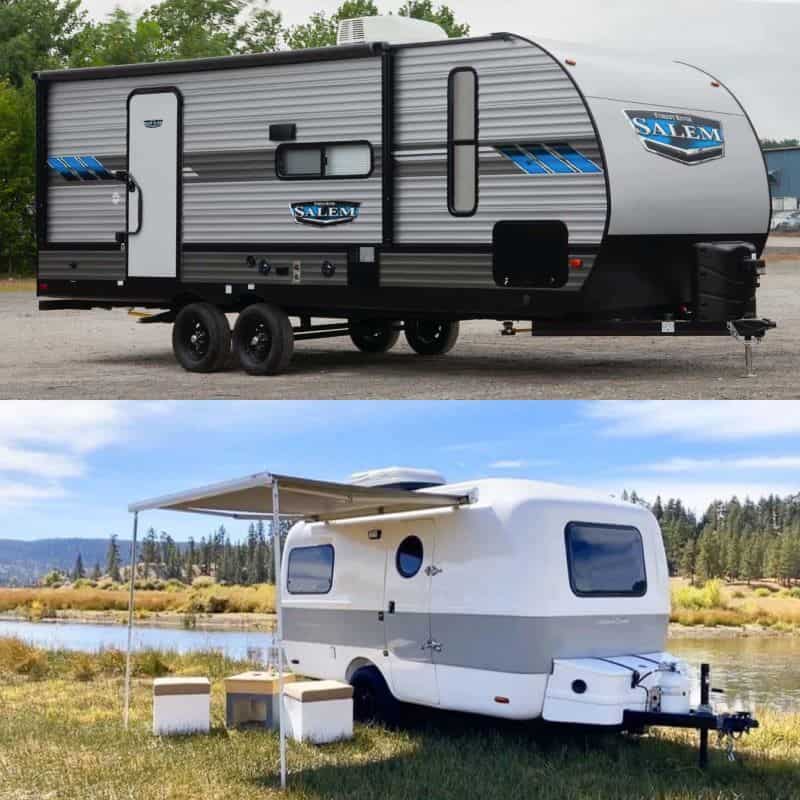
The best way to break down this comparison in a way that makes sense is to stick with categories that make sense to RVers.
We’ll compare fiberglass and aluminum RVs in each category and reveal which one comes out on top. Since different RVers have different tastes, this is the most effective way to cover both from top to bottom.
1. Cost
Aluminum production and manufacturing are cheaper than fiberglass. With Airstreams being the exception to the rule, most aluminum RVs are cheaper than their fiberglass counterparts. The same holds true in resale value as well. Fiberglass (generally speaking) is more durable and easier to clean.
With those points in its favor, used fiberglass RVs are more expensive than comparable aluminum floorplans manufactured in the same year. At least that’s true in the short term.
Aluminum RVs are known for lasting much longer but their resale values don’t reflect that. If you’re looking to save money and find a more budget-friendly deal, aluminum is the way to go.
Winner: Aluminum Campers
2. Maintenance and Repair
The biggest problem with aluminum campers is the limits on what you can clean them with. If you own an aluminum RV, it’s best to stay away from hardcore abrasive cleaning brushes and stick with softer materials and rags.
Aluminum will polish to a fantastic shine and looks great after a wax job but it takes longer, with more considerable effort to maintain. Furthermore, the slightest dent or abrasion in aluminum will typically require professional repair.
Fiberglass campers are prone to oxidation but clean much easier than most aluminum RVs, thanks to the smooth surfaces. However, fiberglass does require a higher degree of regular maintenance, such as polishing and gel for restoration purposes.
Winner: Draw
3. Weight
Aluminum is much lighter than fiberglass, especially considering the amount of fiberglass or aluminum that goes into the construction of a standard RV. This offers prospective RVers a wider degree of towing options depending on their vehicle’s hitch rating. Lighter RVs also mean better gas mileage, in most cases.
Since fiberglass features a smoother surface, it does create an element of aerodynamic superiority to aluminum. The gas mileage that a lighter RV might improve is essentially negated by a heavier but more aerodynamically beneficial RV.
Winner: Draw
4. Insulation
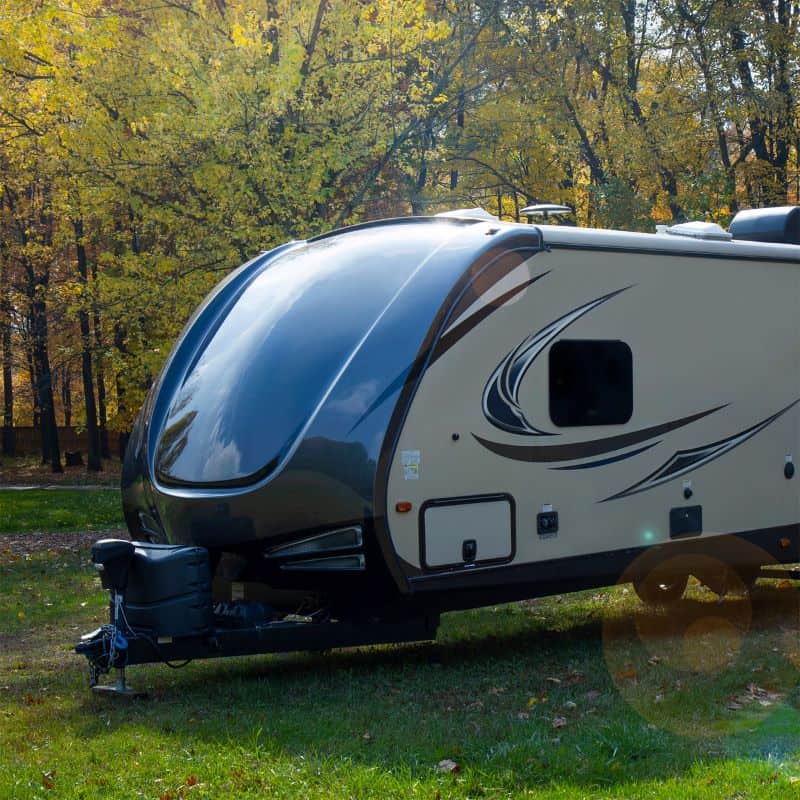
Insulation isn’t just a temperature thing; it’s also a noise thing. The less noise and heat (or winter chill) making their way into your RV, the better. Fiberglass campers are the clear winner here.
Fiberglass doesn’t conduct heat very well and, with proper sealing, is more than enough to keep out the coldest winter chills.
Aluminum, on the other hand, is the exact opposite. The surface tends to get very hot in the summer and icy cold in the winter. You can negate some of this by maintaining a reflective, white paint coating, but nothing will reduce aluminum’s heat conductivity to the same level as fiberglass.
Fiberglass is also better at sealing out the noise. As good as aluminum is at conducting heat, it’s just as good at conducting noise from the outside to the inside. While there is more than just aluminum that goes into an RV to insulate it from weather and noise, fiberglass is the clear winner here.
Winner: Fiberglass Campers
5. Longevity
It’s not uncommon to see 20+ year-old Airstream aluminum RVs for sale. However, on average the lifespan of a fiberglass RV is going to be longer than most aluminum competitors.
Not all things are created equal and when it comes to aluminum camper trailers this is definetly true. Ultimately, today’s big brand aluminum-sided RVs are not constructed to last like an Airstream.
Fiberglass campers, when well-maintained and cared for (especially when it comes to sun exposure) will provide many years of happy camping. The fact that they tend to be more solid in construction and are less likely to leak has much to do with this.
Winner: Fiberglass Campers
6. Resale Value
Most of what affects the lower resale value of aluminum RVs is the lack of popularity. The exception of course are the beloved Airstream models.
Since fiberglass is a rapidly growing manufacturing material in modern RVs, and is in higher demand, the resale values for fiberglass are often higher. Fiberglass also tends to have more aesthetic options on the exterior, with more compatible paints and protectant materials.
Winner: Fiberglass Campers
7. Aesthetics
This one is kind of a wash since everyone has their own, particular tastes. Some people love the extra rounded corners of Airstreams and Scamps though both exist on opposite sides of the spectrum. Some like a more angular look or appreciate the extra color and design properties that go into fiberglass RVs.
For the most part, this one is a draw. When choosing RV aesthetics, the preferences are simply too wild and varied to make a legitimate comparison. Are fiberglass campers better looking than aluminum? To each their own.
Winner: Draw
Are Fiberglass Campers Made for Four Seasons?
No, not all fiberglass campers are made for four seasons. However, there are several brands that are known for manufacturing fiberglass RVs designed for four seasons. Grand Design RV, Heartland RV, Oliver Travel Trailers, Lance, and Keystone are just a few.
RVs designed for four seasons will generally come with heated and well-insulated underbellies, PEX plumbing, heated holding tanks, thicker insulation, and ducted storage. If you are looking at an RV that lacks many of these features (or all of them), then it doesn’t matter what it’s made of—it’s definitely not a four-season camper.
Do Fiberglass Campers Leak?
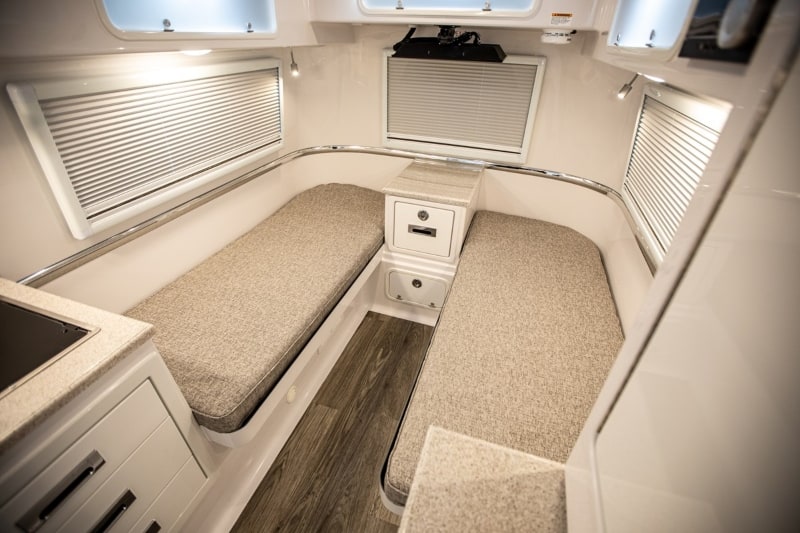
As we referenced above, there are really two types of fiberglass campers to consider when it comes to leaks—molded and fiberglass siding. The molded variations include campers manufactured by Oliver, Escape, Scamp, etc. Campers with fiberglass siding feature the more traditional RV look, like the Bigfoot in the above pic.
Molded fiberglass campers can leak but they are much better at resisting leaks than campers with fiberglass siding. The reason is quite simple. Molded fiberglass campers often have one exposed seam, assuming it’s put together vertically. Other molded fiberglass campers are put together horizontally, making it even more difficult to leak in the long run.
Fiberglass siding RVs have more potential exposure points throughout the camper and they’re often much bigger than molded fiberglass RVs. The more surface area, the more potential there is for problems. Molded fiberglass RVs tend to leak where exterior components come in, such as roof vents and air conditioners.
RVs with fiberglass siding can leak just like aluminum-sided models. However, they are less likely to leak than their aluminum counterparts. If we did a leak category above, fiberglass would have been the winner.
The key to both as always is keeping up with routine preventative maintenance!
Are Old Travel Trailers Worth Buying?
Old travel trailers are certainly worth buying, only if they meet certain criteria—namely yours. Depending on what age we’re talking about here, you may have to do some light to extensive restoration both within and without.
Whether it’s aluminum or fiberglass campers, buying old travel trailers should never be casual. While they cost a lot less than new RVs, there’s always the possibility you’ll end up spending way more than you thought. In fact, it may be a better decision to go with something a little newer for a slightly higher expense.
A thorough inspection is necessary and you should make nothing short of a well-informed decision.
- Look for hidden water damage
- Purchase and accrue travel trailer-related tools
- Check the tanks
- Check every inch of plumbing and connectors
- The same for electrical
- Press the ceiling around A/C units and other potential ingress points for water
- Look for discoloration
- Check the flooring around the toilets
You also need to check into insurance rates before you take the plunge and avoid financing the RV if at all possible. The good news is (again, depending on the age), you won’t have to worry about a shakedown period. In fact, most seasoned RVers recommend purchasing used RVs, roughly five years old.
At this point, most of the immediate issues and repairs will already be taken care of under warranty. It’s definitely worth it but only after you go over the RV with a fine-toothed comb.
If you do plan on purchasing an older RV, finding parts for it is something else you will have to navigate. Luckily, companies like Vintage Trailer Supply makes sourcing replacement parts a breeze.
Final Thoughts: Are Fiberglass Campers Better than Aluminum?
Fiberglass is only better than aluminum in certain ways and the reverse is true in others. Really, what the entire thing boils down to, is what you need and what your preferences are. There is a small but ravenously hyped community around Airstream but that doesn’t mean Airstream is better than most fiberglass variations.
If you prefer to haul something lighter and you like the idea of an RV that will last twice as long, with proper maintenance, an aluminum camper may be best for you. However, if you’re an RV lifer that stays on the road all the time, fiberglass campers are better insulated for the various weather you’ll encounter.
No matter what you decide, so long as you choose based on your needs and wants rather than on a whim, the odds are great that you’ll love your RV through and through.
Related Reading:
1. Do Airstreams Have Slide-Outs?
2. 8 Travel Trailers With The Best Resale Value
3. How Much Do Dealers Mark Up Travel Trailers?
4. How To Insulate An RV Underbelly
About the Author:
Thomas Godwin is a full-time freelance writer with a BFA in Creative Writing, a U.S. Marine, and an avid outdoorsman.
When he’s not writing, he’s raising chickens and Appleyard ducks. Thomas also constructs teardrop campers (attempting to anyway) and kayaks the Blackwater River with his wife, two daughters, and his Dobermans.


